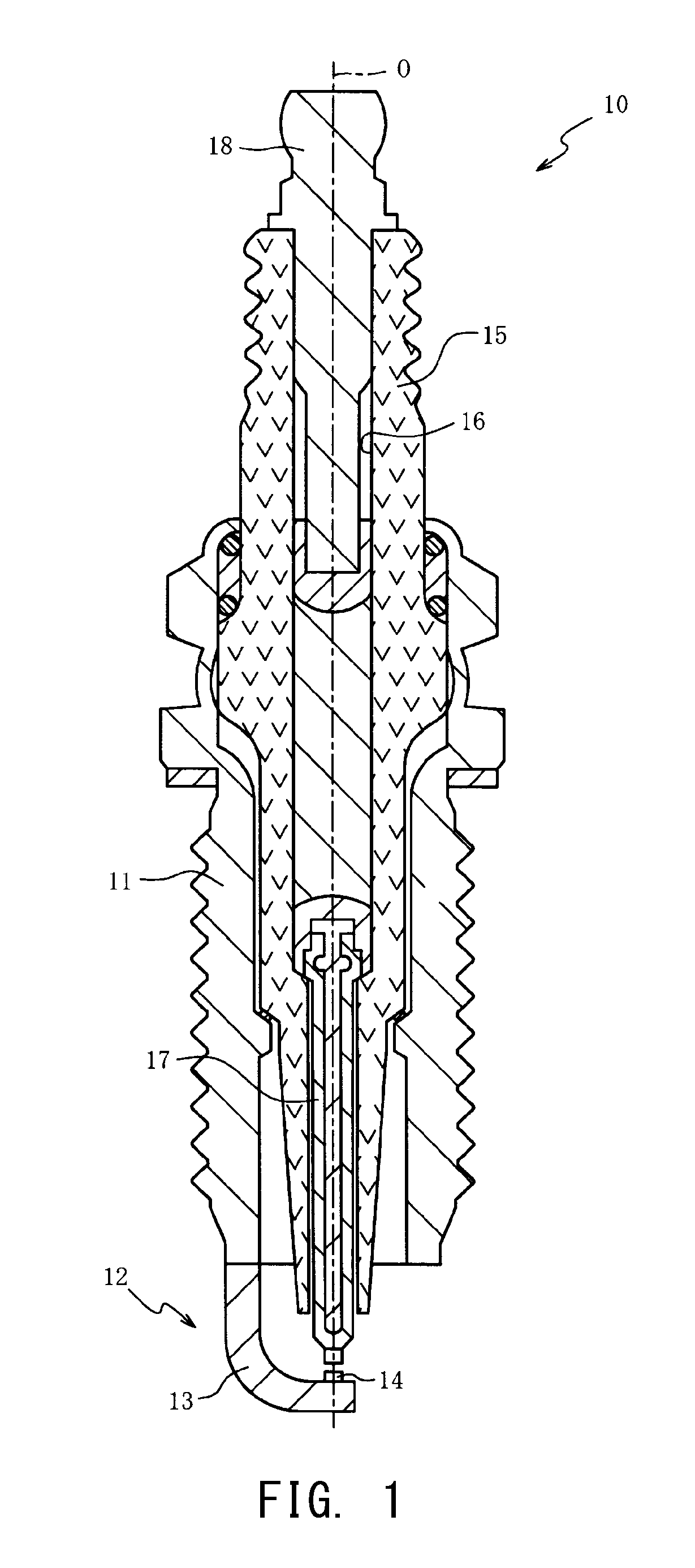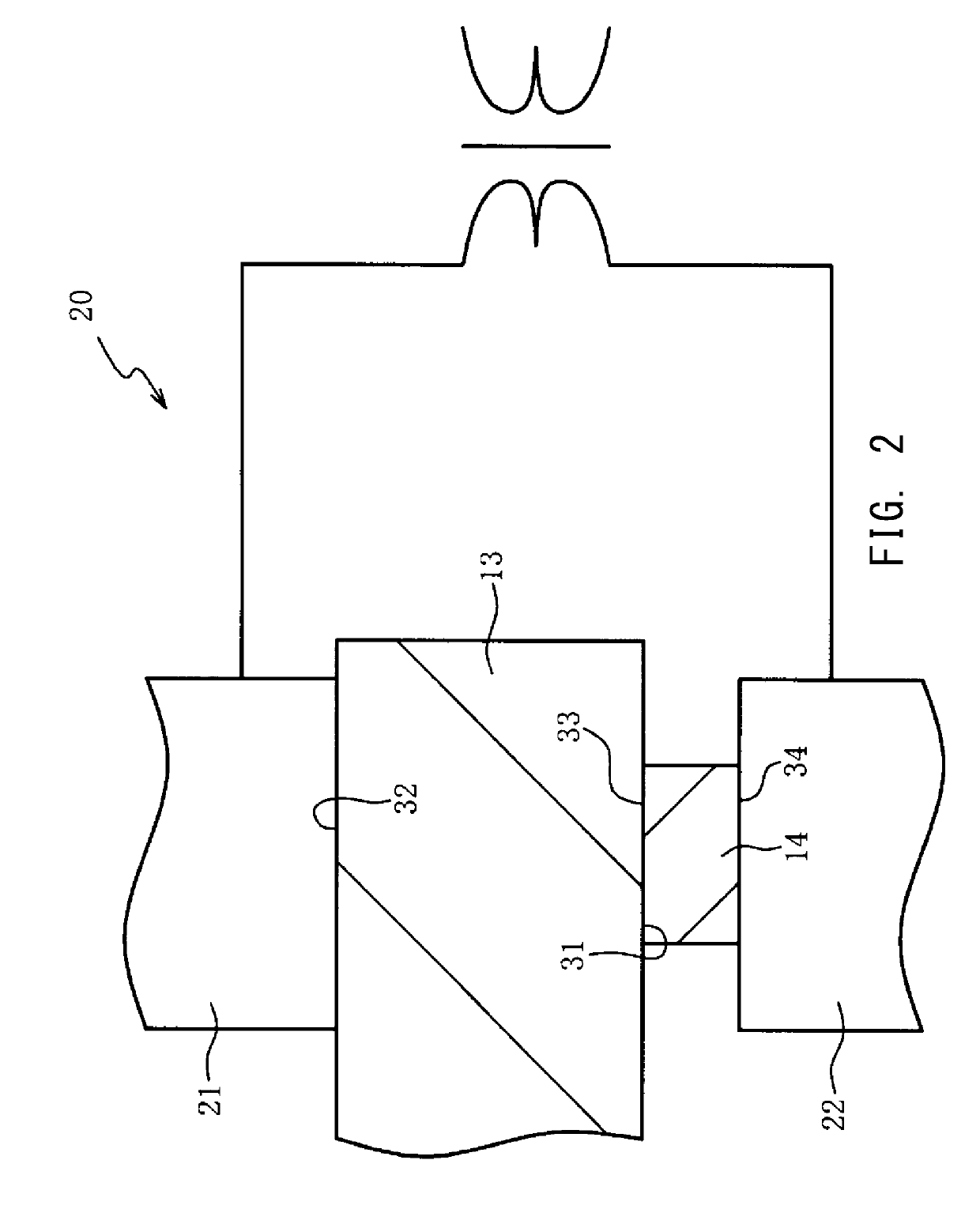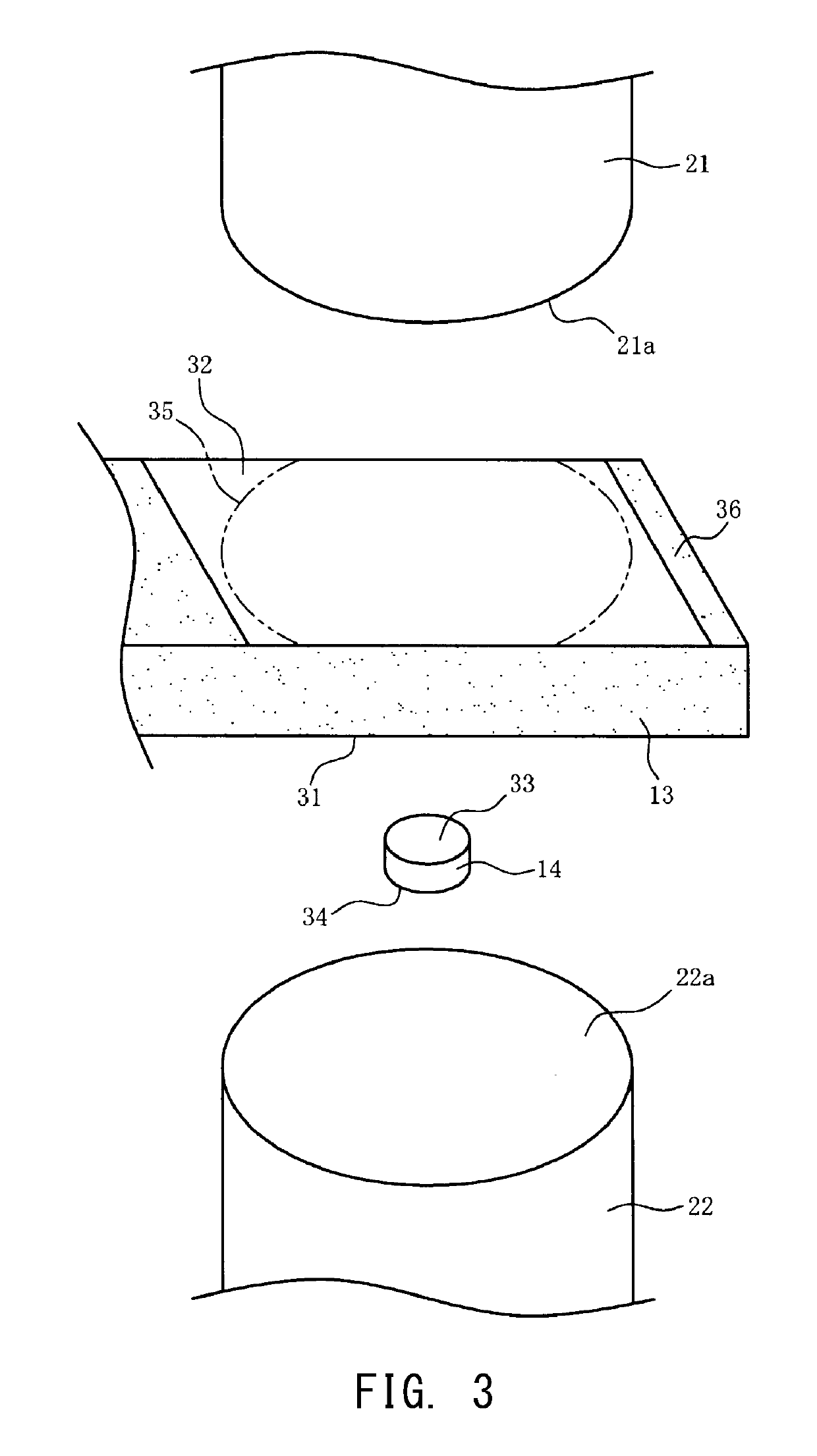Spark plug production method
a technology of spark plugs and production methods, applied in the manufacture of spark plugs, spark plugs, electrical equipment, etc., to achieve the effect of tip cans, improving welding strength, and suppressing variations in welding of electrode base materials
- Summary
- Abstract
- Description
- Claims
- Application Information
AI Technical Summary
Benefits of technology
Problems solved by technology
Method used
Image
Examples
example 1
[0035]30 rectangular plate-shaped electrode base materials each having a width of 2.7 mm and a thickness of 1.3 mm and 30 Cdisc-shaped tips each having a diameter of 1 mm and a thickness of 0.4 mm were prepared. Each electrode base material is formed from a nickel-based alloy, and each tip is formed from a platinum-nickel alloy. Dry type polishing was performed on a front surface and a rear surface of each electrode base material by means of a polishing belt, so that a rectangular-shaped first surface and a rectangular-shaped second surface each having a length of 6 mm and a width of 2.7 mm were produced on the front surface and the rear surface, respectively, of the electrode base material. Similarly, dry type polishing was performed on a front surface and a rear surface of each tip, so that a third surface and a fourth surface were produced on the front surface and the rear surface, respectively, of the tip.
[0036]Next, the arithmetic average roughness Ra of each of the first surfa...
example 2
[0046]As similar to Example 1, rectangular-shaped electrode base materials (each formed from a nickel-based alloy) each having a width of 2.7 mm and a thickness of 1.3 mm and disc-shaped tips (each formed from a platinum-nickel alloy) each having a diameter of 1 mm and a thickness of 0.4 mm were prepared. Dry type polishing was performed on the front surface and the rear surface of each electrode base material by means of the polishing disc, so that a rectangular-shaped first surface and a rectangular-shaped second surface each having a length of 6 mm and a width of 2.7 mm were produced on the front surface and the rear surface, respectively, of the electrode base material. Similarly, dry type polishing was performed on the front surface and the rear surface of each tip, so that a third surface and a fourth surface were produced on the front surface and the rear surface, respectively, of the tip.
[0047]The arithmetic average roughness Ra of each of the first surface and the second su...
example 3
[0051]As similar to Example 1, rectangular plate-shaped electrode base materials (each formed from a nickel-based alloy) each having a width of 2.7 mm and a thickness of 1.3 mm and disc-shaped tips (each formed from a platinum-nickel alloy) each having a diameter of 1 mm and a thickness of 0.4 mm were prepared. Dry type polishing was performed on the front surface and the rear surface of each electrode base material by means of the polishing disc, so that a rectangular-shaped first surface and a rectangular-shaped second surface each having a length of 6 mm and a width of 2.7 mm were produced on the front surface and the rear surface, respectively, of the electrode base material. Similarly, dry type polishing was performed on the front surface and the rear surface of each tip, so that a third surface and a fourth surface were produced on the front surface and the rear surface, respectively, of the tip.
[0052]The arithmetic average roughness Ra of each of the first surface and the sec...
PUM
| Property | Measurement | Unit |
|---|---|---|
| arithmetic average roughness | aaaaa | aaaaa |
| arithmetic average roughness | aaaaa | aaaaa |
| arithmetic average roughness | aaaaa | aaaaa |
Abstract
Description
Claims
Application Information
 Login to View More
Login to View More - R&D
- Intellectual Property
- Life Sciences
- Materials
- Tech Scout
- Unparalleled Data Quality
- Higher Quality Content
- 60% Fewer Hallucinations
Browse by: Latest US Patents, China's latest patents, Technical Efficacy Thesaurus, Application Domain, Technology Topic, Popular Technical Reports.
© 2025 PatSnap. All rights reserved.Legal|Privacy policy|Modern Slavery Act Transparency Statement|Sitemap|About US| Contact US: help@patsnap.com



